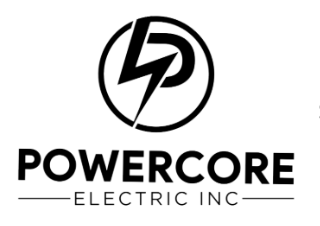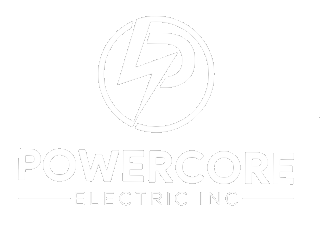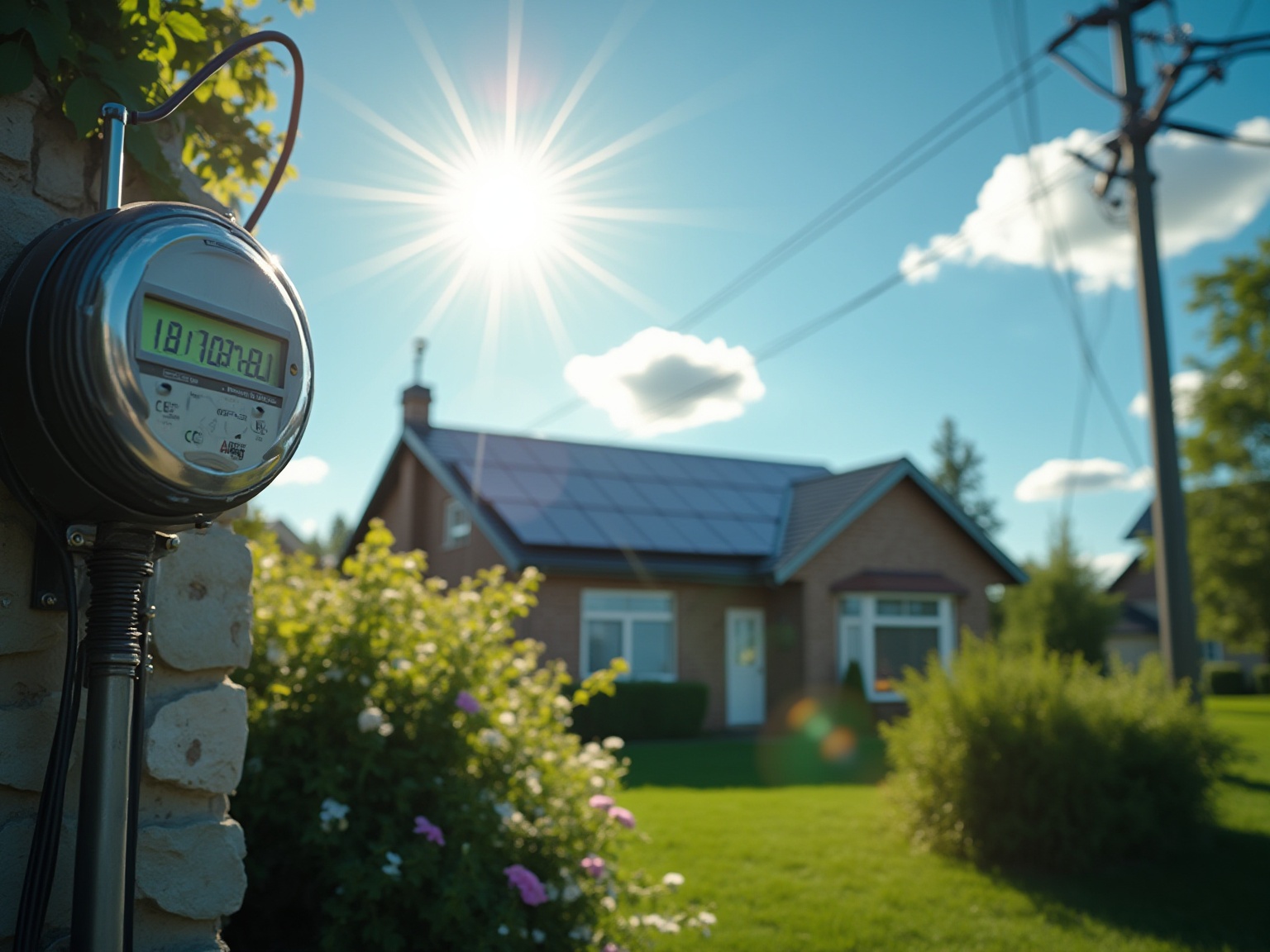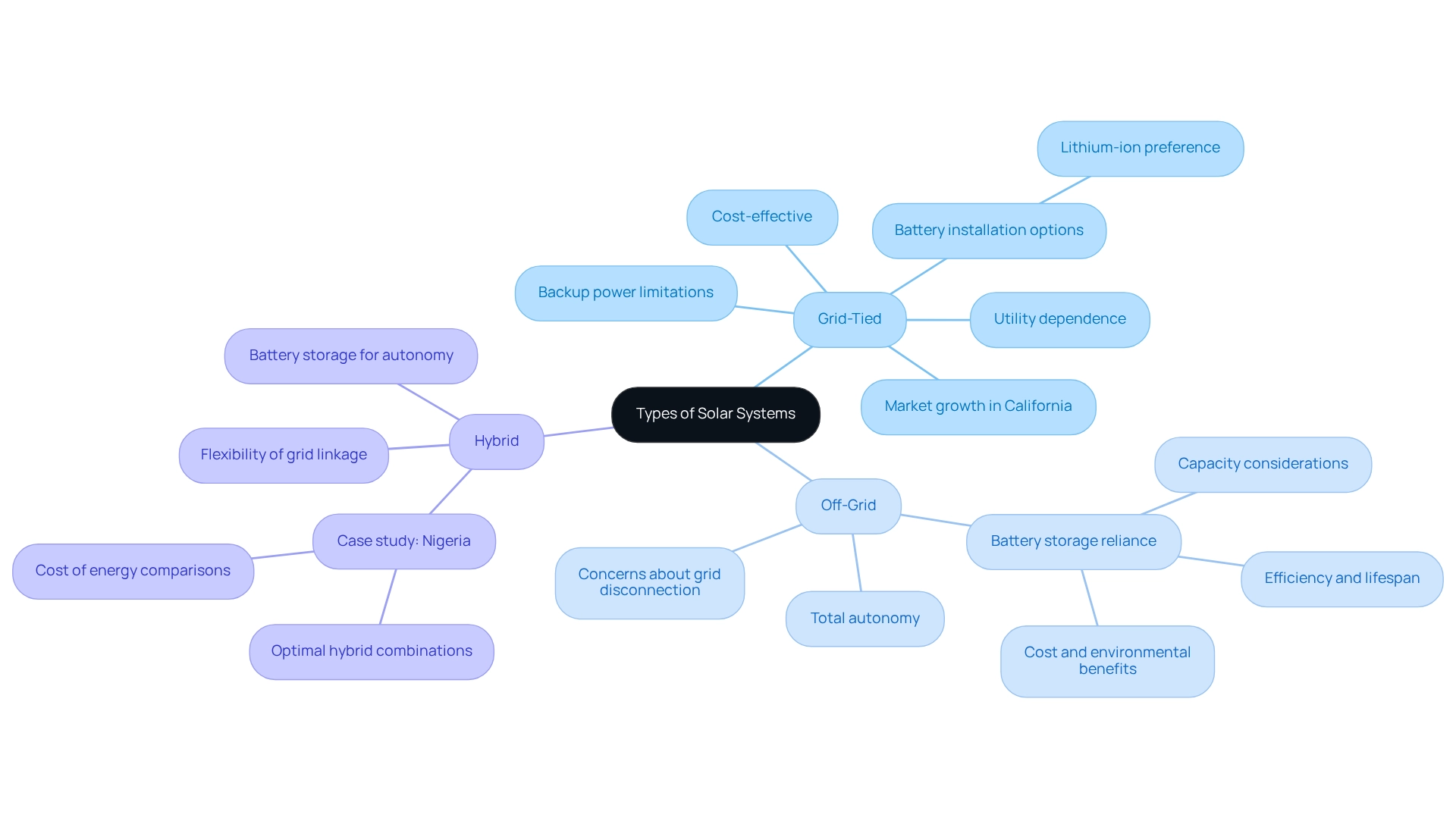Overview
We understand that many homeowners are concerned about rising energy bills and the impact on their finances. Switching to solar energy can be a wonderful solution, and it doesn’t necessarily mean disconnecting from the electrical grid. Homeowners have the option to choose between:
- Grid-tied systems
- Off-grid systems
- Hybrid systems
based on their unique energy needs and preferences.
Grid-tied systems allow you to sell excess energy back to the grid, providing a potential source of income. On the other hand, off-grid systems offer complete independence, freeing you from reliance on traditional energy sources. Hybrid systems strike a balance, combining the benefits of both approaches. It’s essential to evaluate these options carefully and understand the implications of your choice, as each system has its own set of advantages that can cater to your lifestyle.
Together, we can explore these possibilities and find the best fit for your home. If you’re ready to take the next step towards energy independence and a sustainable future, we’re here to support you every step of the way.
Introduction
As we navigate the shifting landscape towards sustainable energy solutions, solar power emerges as a beacon of hope for homeowners concerned about rising energy bills. We understand that financial savings and environmental benefits are at the forefront of your mind. With remarkable advancements in technology and a growing commitment to renewable energy, states like California are leading the charge, producing significant amounts of solar energy and paving the way for a cleaner future.
Imagine transforming your home into a source of energy independence. From grasping the intricacies of photovoltaic systems and the electrical grid to exploring the myriad benefits of solar adoption, this article delves into how solar energy can transform your household. It’s common to feel overwhelmed by the details, but rest assured, we are here to guide you through the essential role of energy storage, net metering, and the evolving relationship between homeowners and utility companies. Together, we can provide a comprehensive overview for anyone considering making the switch to solar.
As the energy landscape continues to evolve, the insights presented here will empower you to navigate your journey towards energy independence and sustainability. Let’s work together towards a brighter, cleaner future for your home and our planet.
Understanding Solar Energy and the Electrical Grid
Solar power is harnessed through photovoltaic (PV) panels, which convert sunlight into electricity. This electricity can be utilized immediately to power a home or fed into the electrical grid. We understand that many homeowners wonder: does switching to solar mean you go off the electrical grid altogether? It’s a complex network that delivers electricity from producers to consumers, ensuring a stable power supply. In March 2025, California topped the country by generating 24.9% of the total renewable power produced in the United States, with roughly 29% of its electricity derived from sunlight.
This substantial contribution highlights the state’s dedication to renewable resources and its role in the national power framework. In comparison, New Mexico produced 417 MWh of photovoltaic power in December 2024, representing 2.3% of . This emphasizes the differing levels of electricity production across states.
When solar panels generate more electricity than a residence consumes, the surplus can be sent back to the grid. This relationship is essential for maximizing resource efficiency and cost savings. It’s common to feel uncertain about these dynamics. Significantly, the percentage of photovoltaic projects that include co-located battery units jumped from 44% in 2022 to 75% in 2023, indicating a rising trend towards storage solutions that improve grid stability and dependability.
The top battery choices, like those available from Powercore Electric, not only deliver effective power storage but also guarantee dependable electricity during outages and poor weather. This establishes them as a crucial part of contemporary systems.
Recent progress in photovoltaic technology has further enhanced the integration of renewable sources with the electrical grid. As specialists highlight, the price of residential photovoltaic panels has dropped by 40% over the last ten years, allowing more property owners to embrace these setups. This shift aids in creating a more robust power infrastructure. The ongoing installation of an additional 22,982 MW of photovoltaic capacity in California over the next five years is projected to bolster this trend, reinforcing the state’s leadership in renewable power production. This raises the question: does switching to solar mean you go off the electrical grid altogether?
Furthermore, the economic and ecological advantages of heating systems that utilize sunlight—such as cost savings, job creation, and greenhouse gas reduction—emphasize the long-term worth of investing in renewable solutions for environmentally aware residents. Together, we can work towards a sustainable future that benefits both our homes and our planet.
Benefits of Switching to Solar Energy
Transitioning to renewable power brings a wealth of benefits for residents, particularly in California, where electricity expenses are among the highest in the nation. One of the most compelling advantages is the potential for significant savings on electricity bills. By harnessing the power of sunlight, homeowners can drastically reduce their reliance on grid power, prompting the question: does switching to solar mean you go off the electrical grid altogether? This transition can yield typical savings of up to 50% on electricity expenses, especially given the state’s favorable sunlight conditions.
At Powercore Electric, a locally-owned company, we understand the unique energy needs of California communities and are committed to offering tailored solutions that maximize these savings.
Beyond direct savings, California provides various incentives and tax credits for renewable energy installations, further enhancing the financial benefits. For instance, the federal tax incentive for renewable energy allows property owners to deduct a substantial portion of their installation costs from their federal taxes, making the transition even more economical. Many homeowners have shared their positive experiences and significant financial relief after switching to renewable energy.
As one satisfied customer noted, “Powercore Electric helped me navigate the process seamlessly, ensuring I received the best bids and quality service. I saved over $10,000 on my installation!”
The ecological impact of embracing renewable power is profound. By reducing dependence on fossil fuels, solar energy contributes to lowering carbon emissions, paving the way for a cleaner and more sustainable future. Homeowners not only reap the financial rewards but also take pride in their role in environmental preservation.
Moreover, renewable power empowers residents with a sense of autonomy. With the rising volatility of utility prices and the threat of power interruptions, many homeowners wonder: does switching to solar mean you go off the electrical grid altogether? Installing solar technology enables them to shield themselves from escalating costs while ensuring a reliable energy supply. While a standard photovoltaic system can offset a significant portion of a household’s energy usage—resulting in long-term savings and a reduced ecological footprint—it raises the question: does switching to solar mean you go off the electrical grid altogether?
As financial experts continue to advocate for renewable energy, the consensus is clear: transitioning to these sources is not only a wise financial decision; it is also a step towards a more sustainable and independent energy future. Homeowners can utilize tools like the solar calculator from SolarReviews to estimate their savings based on location, power consumption, and , empowering them to make informed decisions about their solar investments. Additionally, with the incentives and tax credits available in California for 2025, now is an ideal time for homeowners to consider making the switch with Powercore Electric, known for its unparalleled quality craftsmanship and customer-first service.
Powercore Electric’s dedication to sustainable power solutions ensures that every installation meets the highest standards of quality while positively impacting the environment.
Types of Solar Systems: Grid-Tied, Off-Grid, and Hybrid
Solar power setups can be categorized into three main types: grid-tied, off-grid, and hybrid. Each setup offers unique advantages tailored to the diverse needs of property owners, especially when considering the integration of photovoltaic batteries for effective power storage.
We understand that many homeowners are concerned about rising energy bills and the reliability of their power sources. Grid-connected setups are linked to the electrical network, allowing homeowners to draw power when solar generation is low and sell surplus electricity back to the grid. This arrangement is particularly beneficial in California, where the market share of grid-connected solutions continues to grow, driven by the state’s commitment to renewable energy. By 2025, grid-connected setups are expected to dominate the market, showcasing their efficiency and cost-effectiveness. However, it’s common to feel uncertain about what this means for your energy access. A drawback of grid-tied setups is that if utility power is lost, users cannot access backup energy unless a battery arrangement is installed. Choosing the right solar battery, such as lithium-ion, can enhance the reliability of these setups during outages.
For homeowners seeking total autonomy, off-grid setups function independently from the grid, relying on battery storage to provide energy during times of low sunlight. It’s understandable to wonder if switching to solar means disconnecting entirely from the electrical grid. The growing preference for lithium-ion batteries in modern energy setups underscores their efficiency and longevity, raising the question: does switching to solar mean you go off the electrical grid altogether for those prioritizing self-sufficiency? Important factors for selecting a battery include capacity, efficiency, lifespan, cost, and environmental benefits, all crucial for optimizing power storage.
Hybrid setups combine the benefits of both grid-connected and off-grid solutions, offering flexibility through grid linkage while utilizing battery storage for autonomy. This adaptability empowers property owners to maximize their renewable resource use and sustain power during interruptions, addressing the common issue that grid-connected setups do not provide backup power during utility failures unless paired with a battery arrangement. A case study comparing in Nigeria demonstrated the feasibility of such configurations, showcasing optimal combinations of photovoltaic technology and battery setups.
When considering a solar solution, it is essential for homeowners to evaluate their individual power needs and objectives. For instance, a household with significant power usage may find greater benefit from a hybrid system, while those in areas with reliable grid access might discover grid-tied systems more cost-effective. Expert insights emphasize the importance of understanding these distinctions, as they can significantly impact expenses and reliability.
As Theresa Cruz-Capellan, Secretary-General of the Asia PV Industry Association, noted, “Solar power now enjoys widespread acceptance as the key tool to achieve local power security in the midterm.”
In conclusion, the choice among grid-tied, off-grid, and hybrid photovoltaic setups should consider whether switching to solar means going off the electrical grid altogether, alongside personal power needs, financial factors, and the desire for autonomy. With careful consideration of battery choices that enhance performance, together we can work towards a sustainable energy future.
Net Metering: Selling Excess Energy Back to the Grid
Are you feeling overwhelmed by rising energy bills? Net metering could be the solution you’ve been looking for. This essential billing agreement allows property owners with photovoltaic installations to earn credits for the excess electricity they produce and send back to the grid. When your photovoltaic system generates more power than your home uses, the surplus is sent to the grid, enabling you to gain credits on your utility bill. This not only helps reduce expenses during periods of low sunlight but also serves as a strong motivation to adopt renewable energy sources, making it a financially appealing choice.
In California, net metering regulations are particularly beneficial. Residents can sell their surplus power at retail prices, significantly enhancing the financial advantages of photovoltaic systems. Recent findings from power economists indicate that 78% of photovoltaic installers expect higher sales in 2025, driven by the financial benefits of net metering. This trend showcases the growing recognition of solar energy as a viable and rewarding investment.
As solar policy analyst Ben Zientara notes, “Net metering is a game changer for property owners, offering them the financial flexibility to invest in solar power solutions.” This flexibility is crucial as more homeowners seek ways to alleviate the burden of utility costs.
Furthermore, a significant trend has emerged: in 2024, 80% of property owners cited access to backup power as their primary reason for installing storage systems. It’s common to feel the need for reliable power supplies, especially with rising utility expenses. A case analysis titled ‘Freedom from Utility Rate Hikes’ effectively illustrates this point; individuals who installed photovoltaic panels reported stable utility expenses, successfully shielding themselves from the fluctuations of utility pricing.
This case study highlights how net metering contributes to financial stability by allowing residents to benefit from consistent utility costs.
As we look ahead to 2025, in California continue to support residential property owners, providing them the opportunity to obtain credits for surplus power sold back to the grid. Additionally, state incentives, such as tax credits and storage rebates, further enhance the financial landscape for homeowners considering renewable energy. Together, we can improve not just our financial savings but also contribute to a more sustainable resource landscape.
Homeowners are increasingly reaping the rewards of these agreements, with many receiving significant credits that encourage their transition to renewable power solutions. Imagine combining Tesla home chargers with renewable energy systems to maximize resource utilization! Moreover, government initiatives offer extra support for individuals looking to embrace photovoltaic technology. Battery options also play a vital role in power storage, ensuring you have access to reliable electricity during outages.
Let’s work towards a brighter, more sustainable future together.
Challenges of Transitioning to Solar: Regulatory and Grid Connection Issues
Transitioning to renewable energy in California can feel overwhelming, especially with the complex landscape of regulatory requirements and grid connection processes. We understand that homeowners often face significant challenges, including delays in obtaining necessary permits and navigating interconnection agreements. In 2025, the average time to secure permits for photovoltaic installations can extend beyond several weeks, depending on local jurisdictional requirements.
It’s common to feel frustrated when the existing electrical grid’s capacity to accommodate new photovoltaic systems varies across regions. For instance, areas experiencing grid congestion may encounter additional delays in project approvals, which can impact the overall timeline for installation.
Moreover, the California Legislature is grappling with legislative challenges regarding electricity rates, driven by ambitious greenhouse gas reduction goals, rising electricity demands, and wildfire-related costs. These factors contribute to an increasingly complex regulatory environment that homeowners must navigate.
Interacting with knowledgeable installers of solar systems, such as Powercore Electric, who are familiar with local regulations is essential for ensuring a seamless shift to renewable power. Powercore Electric provides customized renewable solutions, including home panel installations and power storage systems, aimed at tackling these challenges. Their expertise offers valuable guidance on overcoming typical regulatory hurdles, such as comprehending interconnection requirements and addressing potential grid connection issues.
As the industry evolves, insights from experts indicate that 38% of companies foresee growth in 2025, demonstrating a positive outlook despite the regulatory challenges. This growth underscores the importance of homeowners remaining proactive in understanding these challenges and seeking expert assistance to facilitate their transition to sustainable energy solutions. Furthermore, it is significant that 73% of in H1 2024 originated from states such as New York, Maine, and Illinois, suggesting a wider context for California’s energy landscape.
Homeowners should recognize how these legislative challenges specifically affect their choices and the significance of collaborating with informed energy installers like Powercore Electric to navigate the intricacies of the transition. Together, we can work towards a sustainable future. Compared to other providers, Powercore Electric distinguishes itself for its dedication to customer service and its thorough understanding of the unique requirements of residents in both Northern and Southern California.
The Role of Energy Storage in Solar Systems
Battery storage solutions are essential for addressing your concerns about optimizing the benefits of solar power. These systems empower homeowners to gather and retain surplus energy generated during peak sunlight hours, allowing you to use that energy during evenings or on cloudy days. This capability significantly enhances your independence in power supply and ensures you have backup power during outages. You might wonder: does switching to solar mean you can completely disconnect from the electrical grid while keeping your essential appliances running?
Imagine a properly sized solar battery system that can store enough power to support your home for several hours or even days, depending on your household’s energy needs and the battery’s capacity. This could provide you with peace of mind, knowing that you have a reliable energy source.
As we look ahead to 2025, the average power storage capacity of solar battery systems in California is becoming increasingly impressive. Many homeowners are opting for solutions that can store over 10 kWh. This trend is supported by extensive battery storage initiatives across the state, such as the Lunis Creek BESS SLF (621 MW) and Clear Fork Creek BESS SLF (600 MW), showcasing the shift towards larger and more efficient storage options. Additionally, the Moss Landing Storage Facility, in the United States, boasts a capacity of 750 MW, further highlighting the advancements in storage technology.
The adoption of innovative storage technologies is not only reducing carbon emissions but also enhancing grid stability and minimizing waste. With over 300 utility-scale battery storage projects expected to be operational in the U.S. by 2025, integrating these systems into photovoltaic installations is becoming more common, making renewable energy solutions more adaptable and dependable.
More and more homeowners are recognizing the benefits of battery storage for backup power. Families utilizing battery solutions often express relief knowing they can maintain power during outages, which is particularly valuable in areas prone to electrical interruptions. Experts emphasize that power storage is crucial for enhancing renewable setups, prompting the question: does switching to solar mean you can fully disconnect from the electrical grid?
Moreover, federal tax credits can cover up to 30% of the costs associated with installing storage solutions in California homes, providing a significant financial incentive for homeowners considering these options. Alongside battery units, Tesla residential chargers are becoming an integral part of the renewable energy landscape, allowing residents to recharge their electric vehicles using solar energy. Government initiatives also play a vital role in promoting the adoption of photovoltaic systems, offering incentives and rebates that make installations more accessible.
As the landscape of renewable energy continues to evolve, the role of storage systems will remain pivotal in shaping sustainable practices. At Powercore Electric, we are dedicated to providing residents with the best solutions for achieving independence in power. Together, we can work towards a brighter, more sustainable future.
Long-Term Implications of Going Solar: Energy Independence and Utility Relations
As property owners, you may often find yourself wondering: does switching to solar mean you go off the electrical grid altogether? This is a common concern, and it’s understandable to seek clarity on how photovoltaic power can impact your autonomy in power supply and your relationship with utility providers. With more homeowners embracing renewable energy, the question arises: could this shift lead to a decrease in dependence on conventional grid power and potentially transform utility business models? Many who invest in improved power security and more predictable utility costs.
However, this transition may prompt utility companies to reevaluate their pricing structures and service offerings. For example, numerous utilities are currently assessing time-of-use rates and demand fees to adapt to the growing significance of renewable power. Staying informed about these evolving pricing strategies is essential for homeowners like you who wish to enhance their energy consumption and manage expenses effectively in this changing power landscape.
The introduction of Net Energy Metering (NEM) 3.0 in April 2023 serves as a vital case study, demonstrating how regulatory changes can influence renewable energy adoption. This policy adjustment has reduced compensation rates for surplus energy fed back into the grid, making it less financially appealing for new renewable energy customers. Consequently, the focus on battery storage has intensified, allowing residents to optimize their self-consumption of produced renewable energy.
California’s stringent building and electrical regulations further highlight the regulatory landscape surrounding renewable energy systems, ensuring that you can trust the safety and reliability of your installations. Powercore Electric‘s dedicated team of specialists guarantees top-notch installations and maintenance, enhancing the dependability of renewable energy solutions. As you evaluate service providers, understanding the competitive environment is crucial for finding the best value in renewable solutions, particularly when comparing Powercore Electric with other options.
As more Californians adopt solar power, the long-term effects on utility companies become increasingly evident. The shift towards renewable power sources is not only altering the dynamics of utility relationships but also fostering a more sustainable future. Energy analysts stress that this move towards self-sufficiency raises the question: does switching to solar mean you go off the electrical grid altogether? This consideration is vital for homeowners, as it empowers you to manage your energy needs while contributing to a more sustainable environment.
A. Salusky, a satisfied client, shares, “I had a truly fantastic experience with installing panels at my home. The Solar Source team was responsive and kept me informed each step of the way. Permits were pulled without any effort on my part, and the installation team was friendly and respectful. I am proud to share that my utility bill is at zero most months and I am saving money as a result of the installation. I highly recommend Solar Source!” Understanding these advancements is crucial for homeowners seeking to navigate the complexities of renewable power and its effects on utility connections.
Moreover, with reduced incentives, California’s solar companies, including Powercore Electric, are increasingly prioritizing energy efficiency and innovations in energy management and smart home integrations, further enhancing the value of solar adoption. Together, we can embrace these changes and work towards a brighter, more sustainable future.
Conclusion
Transitioning to solar energy is not merely a financial decision; it represents a significant step towards energy independence and environmental sustainability. We understand that many homeowners are concerned about rising energy bills, and the comprehensive insights provided throughout this article highlight the multifaceted benefits of solar power. From substantial savings on electricity bills to the positive impact on the environment through reduced carbon emissions, the advantages are clear. As homeowners in California embrace these technologies, they also gain a sense of empowerment, reducing their reliance on utility companies and navigating the evolving energy landscape with confidence.
Understanding the various solar systems—grid-tied, off-grid, and hybrid—enables homeowners to make informed decisions tailored to their specific energy needs. It’s common to feel overwhelmed by the options available, but the role of energy storage, particularly through advanced battery systems, further enhances the reliability and efficiency of solar installations. This ensures that homeowners can harness the full potential of their solar energy production. Moreover, favorable net metering policies and available incentives make the transition to solar more financially attractive, encouraging widespread adoption.
While challenges such as regulatory complexities and grid connection issues remain, the growing expertise of solar providers can help homeowners overcome these hurdles. By choosing knowledgeable installers, like Powercore Electric, homeowners can navigate the intricacies of solar adoption with ease. Ultimately, the shift towards solar energy is not just about individual savings; it’s about contributing to a sustainable future and reshaping the energy landscape for generations to come. Embracing solar power is a commitment to both personal and planetary well-being, paving the way for a cleaner, more resilient energy future. Together, we can make a difference—let’s work towards a brighter tomorrow.




